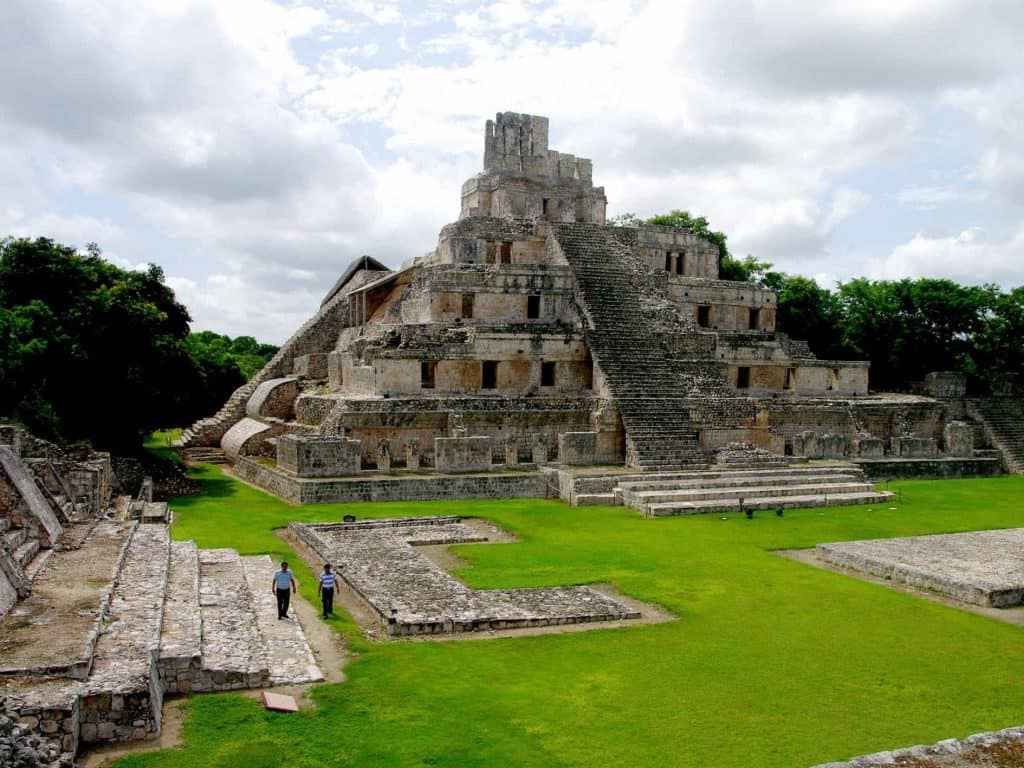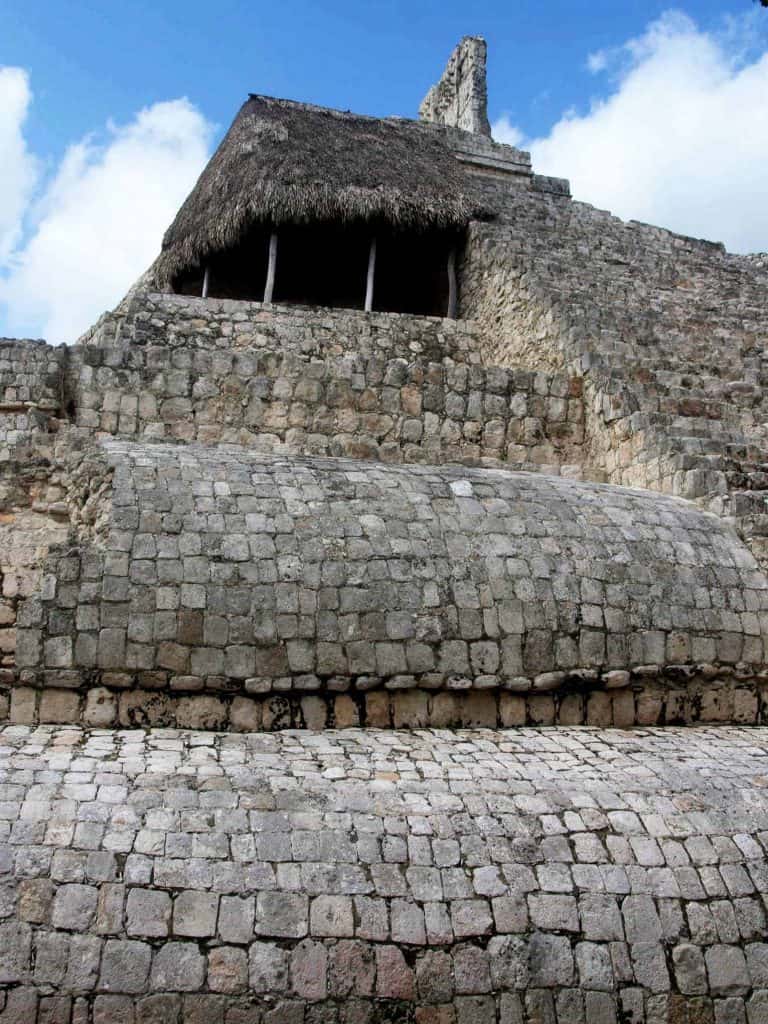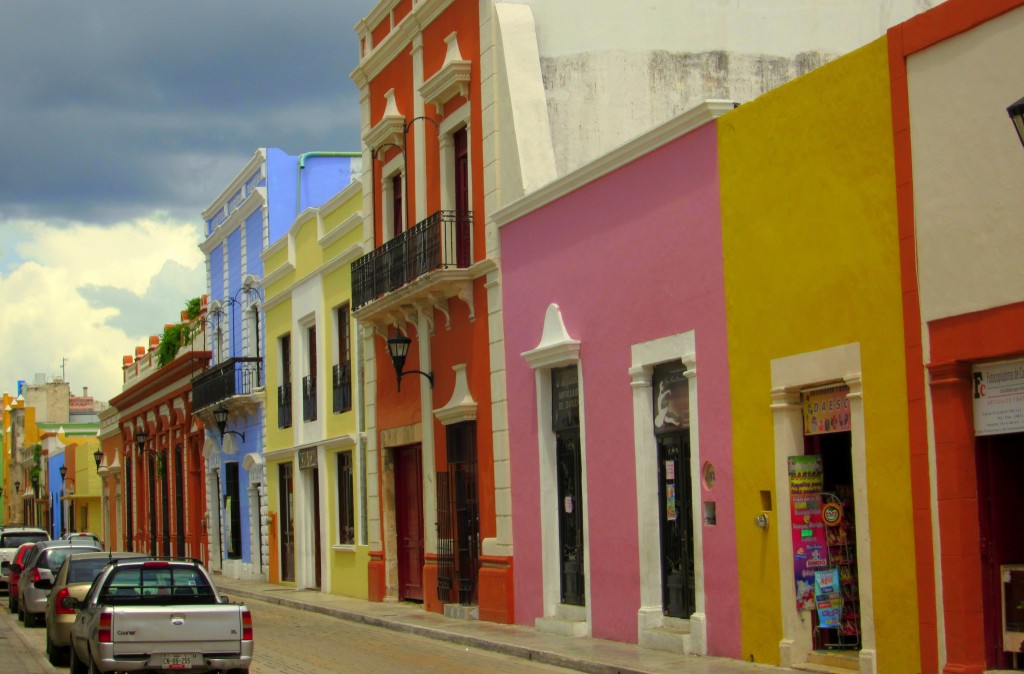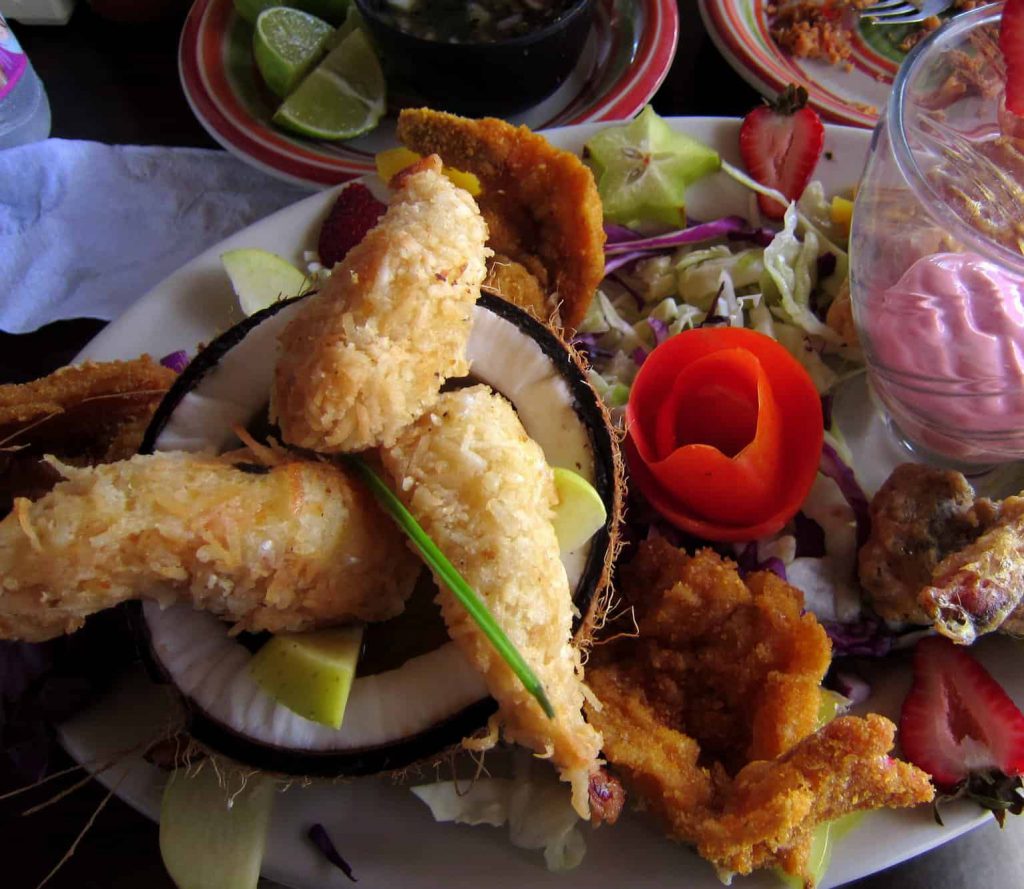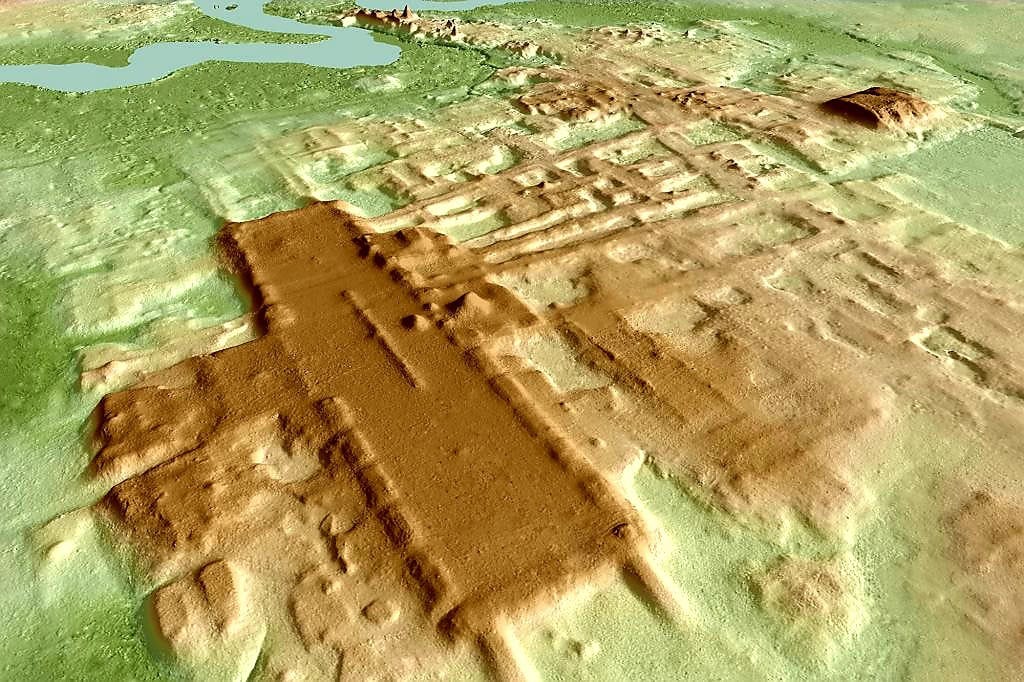Edzná – Campeche – The House of the Itzá
Have you ever visited the ruins of Edzná in Campeche? The answer should be “no” because only a few people find their way to this superbly preserved site of the Maya. The city is about an hour’s drive from Campeche, the capital of the Mexican state of the same name. From Mérida, you can reach Edzná in about three hours. The Maya ruins of Edzná are located inland, about 40 kilometers from the Gulf coast in the west of theYucatán Peninsula.
The House of the Itzá
The name Edzná (Itzná) comes derives from a Mayan language, called Chontal. It means the house of the Itzá, which would point to a possible connection between Edzná and Chichén Itzá. The city was once the capital of a relatively large state area.
Their influence extended in the north to the Puuc region, in the south-west, it bordered on the sphere of influence of Calakmul. The town area recognized to date has a size of approximately 25 square kilometers. 25,000 people could have lived here.
HISTORY
Several huge buildings have been erected during the classic period of Maya history. But the beginning of Edzná dates back to the pre-classical period. About 400 BC to 1450 AD, the area was inhabited over a period of nearly 1800 years.
During the excavations in Edzná, 32 steles and 2 hieroglyphic stairways have been discovered. Thanks to the inscriptions, it was possible to create a list of ten dynastic rulers that reaches from 633 AD to
869 AD. A close relationship to Calakmul seems to have existed. It is assumed that in the seventh century, Yuknoom Cheen II, also known as “the Great,” who was a prominent ruler of the Kaan kingdom based in Calakmul, was simultaneously the ruler of Edzná.
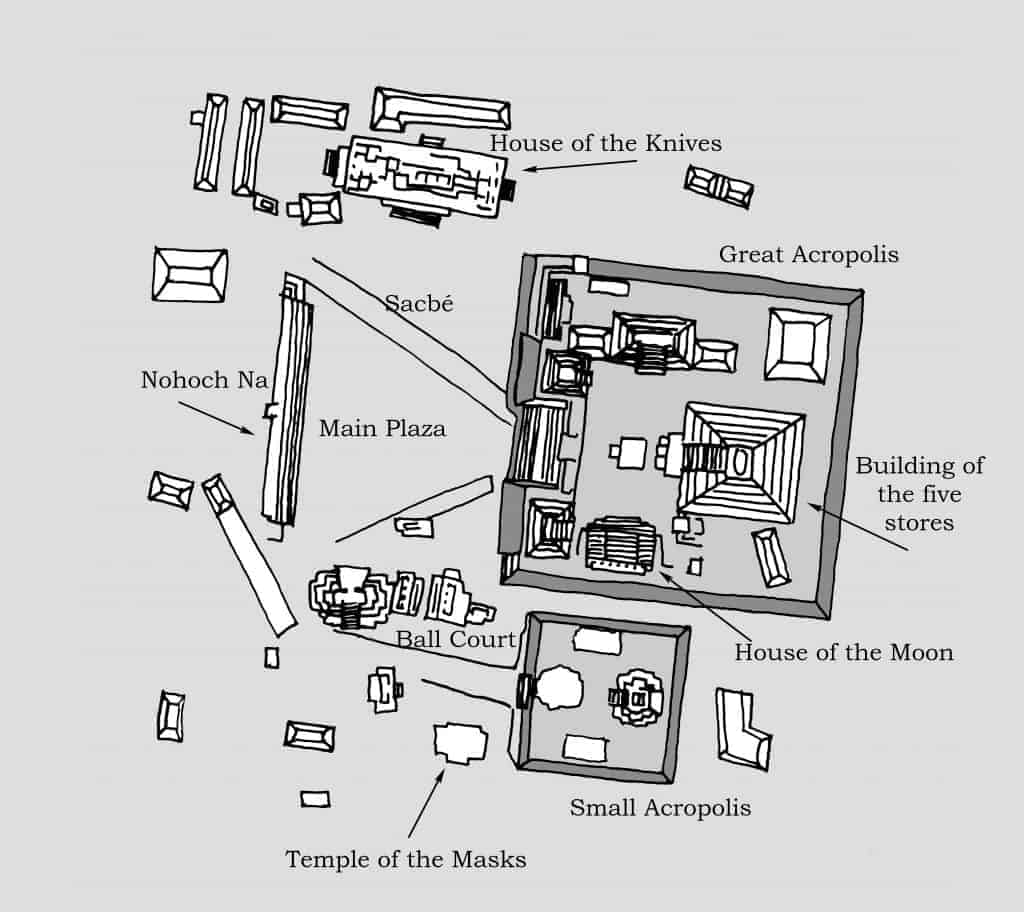
A remarkable event, worth to be noted in the inscriptions, was the arrival of a female ruler or princess from the Maya city of Petexbatun in the southern lowland in today’s Guatemala, also in the 7th century.
During this time the influence of Edzná grew far north to the Puuc region.
Towards the end of the 7th century, the forces of Calakmul were defeated in the war against Tikal. Calakmul did not recover from the defeat and lost his pre-eminence in the Maya world.
After a series of wars, presumably against Cobá on the east coast of the peninsula and his allies, Edzná had to accept a temporary loss of its power and influence.
In the 8th century, the city experienced the arrival of a group of people from today’s Tabasco, which was probably the Itzá group.
The last “Long Count” inscription dates from the year 810 AD. Edzná was not abandoned at the end of the classic period as it happened to the classical cities of the South. It was still inhabited in the post-classic era and was an essential center of the region. It was only at the end of the postclassical period between 1450 and 1500 that Edzná was left by its inhabitants.
The ancient ruins were rediscovered in 1907. Organized excavations began in 1958. Since the 1980’s, considerable efforts have been made to restore the buildings.
BUILDINGS
The entrance, through which one enters the site, is located in the north of the area.
THE BIG SQUARE
In the center of Edzná, you will reach “the big square,” to the east of which is the Acropolis located. In the north, the square is bordered by the platform of knives, to the east is “The Big House,”” Nohochná,” which is thought to have served administrative purposes. To the south of the square are the South Temple, a ball court and the Temple of Masks. From the stairs to the great Acropolis, two “sacred streets” – Sacbeob – lead to the two corners of the Great House “Nohochná.”
THE GREAT ACROPOLIS
There are numerous temples and palace buildings on a square platform, which can be reached via the west-facing long straight stair. The whole complex is called “The great Acropolis.”
The Temple of the Five Stories
The largest of the buildings is the temple of the five stories with its central staircase. It raises about 40 meters above the environment using five steps. This pyramid has very unusual door openings on its front that lead to rooms with cobbled vault. It is, therefore, to be assumed that the monument not only had a ceremonial character, but also served as a palace, and thus a place of residence.
The Northern Temple
On the north side of the Great Acropolis, you will find the Northern Temple. The last structural change of this building is from the postclassical era. Just beside is a structure named “Patio Puuc” with a limited inner courtyard, which initially contained a steam bath. The name derives from the design elements of the Puuc style found in this structure.
The Temple of the Moon
At the southern end of the Great Acropolis, just opposite the northern temple, stands the Temple of the Moon, which, with its front stairs, faces the Northern Temple.
THE SMALL ACROPOLIS
The Small Acropolis is another platform that is located south of the Great Acropolis. On it is the Temple of the Steps situated.
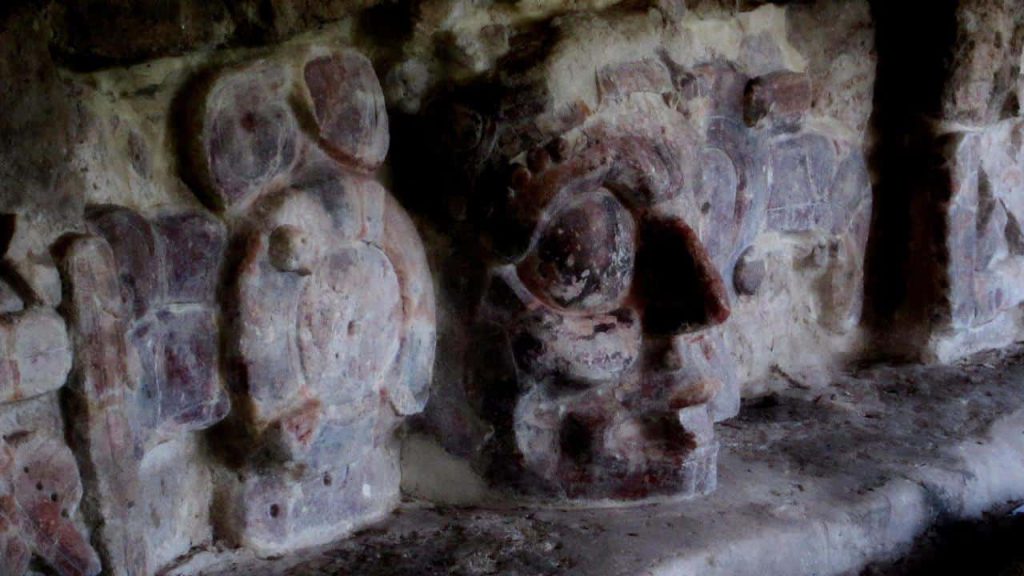
One of the masks of the sun god Kinich Ahau – from the Temple of the Masks – El Templo de los Mascarones – Detail, colors enhanced – Edzná – Campeche
THE TEMPLE OF THE MASKS
The Temple of the Masks is rather small but nevertheless interesting. It is located west of the small Acropolis. There you will find two big stone masks, which presumably represent the sun god of the Maya. They are in a perfect state of preservation.
THE OLD WITCH – LA VIEJA HECHICERA
About 800 meters from the center, in the north-western direction, is another significant structure, the OldWitch – La Vieja Hechicera.

WATER MANAGEMENT
The area around Campeche is the least rainy in the Maya area during the dry winter months. Accordingly, the vegetation on the north-eastern Gulf coast is also characterized by dry forests that change to shrubland or savanna further north.
But during the rainy season, from July to September, the daily average rainfall reaches 180mm per day, making the area the wettest region in the northern lowlands. The relatively impermeable subsoil can quickly lead to flooding.
This was a big problem for the Maya in classical times, but they have solved it masterfully. Remains of a complex system for water management can be seen at various points on the site. The primary purpose of this water system could have been the rapid drainage of the municipal area after heavy rainfall.
The length of the channels used for this purpose was up to 6 kilometers. Several of them lead to a nearby lake. In addition to the outflow, canals were also used as transport routes and, of course, for irrigation of the fields. Additionally, they might have been served as a defense facility. Also, they helped to enrich the selection of food using fish farming.
TRAVEL ADVICE
To visit Edzná, it is recommended to stay in Campeche. Around Edzná there are no significant options for accommodation. The public bus runs from Campeche only once or twice a day. That is why I rented a taxi for a day to visit Edzná. It is more favorable if you join with others or book an organized tour. In the central square in Campeche, you will find local travel agents that will arrange this trip. The hotels can also help you with the organization of such an excursion.
Since 1999, Campeche has been a UNESCO World Heritage Site. The city of 250,000 inhabitants was founded in 1540 by the Spanish conquerors.
Over the centuries Campeche was attacked by pirates several times, sometimes even conquered and all its inhabitants sold into slavery. A museum devoted to the theme of “pirates,” as well as the nightly performances on the old city walls, keep up the memory of these events. The mighty fortifications with their rusted cannons are well preserved and can be visited.
The city center has been able to preserve the old style of the colonial period, with much less tourism than the smaller San Cristobal de las Casas in Chiapas.
Although numerous travel guides especially highlight the fresh seafood offer right here on the Gulf Coast, I would strongly advise to only eat cooked food.
After the visit of Campeche, I recommend continuing to Palenque. The bus takes about four hours for the route.
